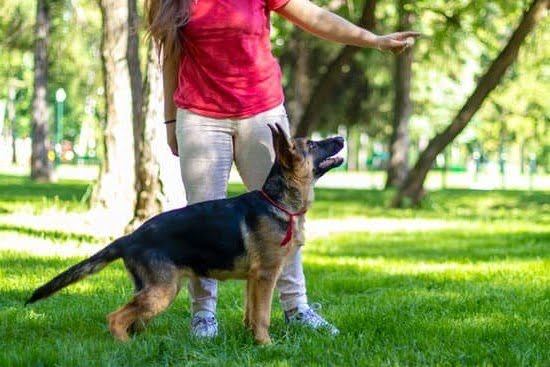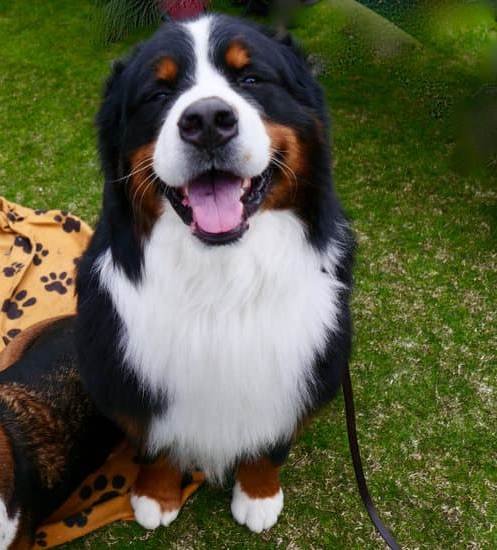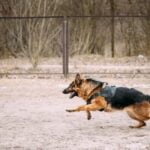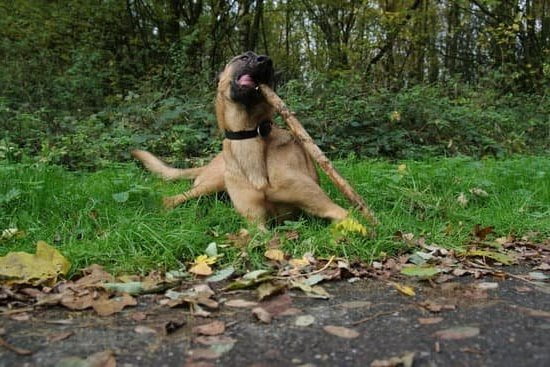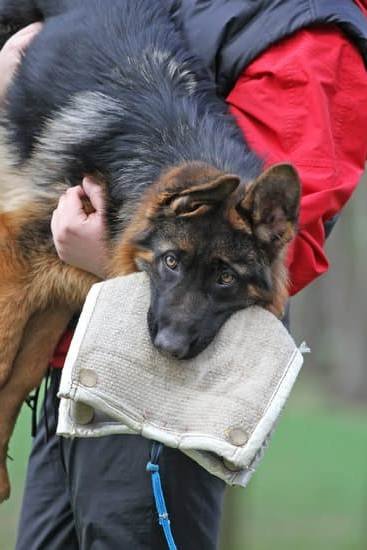Introduction
Dog aggression is a broad term used to describe any behavior that involves hostility or aggression towards other animals, humans, or objects. Some of the most common types of aggression include territorial aggression, fear-induced aggression, possessive aggression, and predatory aggression. Territorial aggression occurs when a dog perceives a particular area as their own and will exhibit defensive behavior when another dog or person threatens it. Fear-induced aggression shows up when a dog becomes scared either by loud noises or sudden movements and will act aggressively in hopes to remove the source of fear. Possessive aggression happens when an animal conceives an object such as food, toys, or other items as theirs and defends it with teeth bare. Predatory aggression is exhibited when there is a chase instinct towards smaller animals like squirrels, cats, or birds.
No matter the type of aggressive behavior being displayed by your pet dog it is important to determine what causes the behavior before attempting to correct it. The training techniques used will vary depending on both the situation which caused the aggressive behavior and its severity. Working with professionals such as veterinarians may be necessary in order to safely teach acceptable behaviors while avoiding injuries both physical and mental for all parties involved. Dog owners must remember that taking appropriate steps to address aggressive behavior can provide not just a safe environment for others but also give their pet relief from stressful situations which breed negative behaviors in the first place. Provide structure through consistent rules along with positive reinforcement each time acceptable behavior is witnessed over time helps keep dogs from succumbing to aggressive behaviors so remember if you seeing signs of possible problem always start early intervention to help your furry friend stay happy and healthy overall!
Identifying the Problem
Physical symptoms of dog aggression can vary depending on the intensity of the aggression and the cause, but some common signs to look out for include snarling and baring teeth, growling, barking or lunging at people or other animals, guarding possessions (such as food) or areas of the house and snapping. When documenting the physical and behavior symptoms of aggression it’s important to note how often these occur, when they occurred, in what situation they occurred, who the target was (if there was one) and how you responded. It is also helpful to document how your pet has reacted to similar events in the past. With this information you can more accurately identify where and why your pet is displaying these aggressive behaviors so that you can better formulate an appropriate response.
Causes of Aggression
Dog aggression can be caused by a variety of genetic and environmental factors. Genetics play an important role in the aggressiveness of a dog, as certain breeds are prone to aggressive behavior. How parents are raised, as well as their experiences growing up, can also contribute to aggression. In puppies and younger dogs, specific early socialization experiences could lead to aggression if they’re not handled properly. For adult dogs, the environment of their home can cause or worsen existing aggression – issues like inadequate exercise or too much confinement or boredom may contribute to aggressive outbursts. Lack of proper discipline and relationship building between the pet parent and dog may also lead to increased levels of aggression over time. The age of the dog will also affect the type and severity of aggression – for example, senior dogs with declining physical health often experience increased signs of irritability and reactivity due to low tolerance for stimuli.
Interrupting Aggression
The first step in training an aggressive dog is to interrupt their aggressive behavior. This can be done using humane techniques such as making a noise to distract or redirect the dog’s attention or providing a treat or toy to replace the object of aggression. If the dog does not stop their aggressive behavior, it may be appropriate to use a leash and head halter, body harness or backpack restraint to manage them. Physical punishment such as hitting or scolding should not be used as this may only escalate anxiety, fear and aggression. Positive reinforcement and reward-based techniques are more effective for teaching dogs that aggression is not welcome.
Desensitizing
It is important to remember when training a dog suffering from aggression that we need to create a positive learning environment. This means setting up the space so it is comfortable, calm, and free of distractions. Rewards should also be used as reinforcement for good behavior. Rewarding desirable behaviour every time it occurs helps the dog understand what behaviors are expected of them quickly, thus reducing the potential for aggressive outbursts. Feeding treats in timed intervals can be especially useful when working on desensitizing a dog to an aggressor or trigger. When feeding treats we want to ensure the treats are small enough that the dog does not become overwhelmed by the distraction and stay focused on eating the treat instead of reacting negatively to the stimulus around them. Using food rewards will help develop a strong bond between you and your dog and make each training session enjoyable for both you and your pup!
Making Alternatives Available
Something owners can do to positively channel aggression is providing mental stimulation. Owners can give their dog challenges such as games, puzzles and interactive toys that require their dog to think and use its instinctive problem-solving skills. This type of activity provides a safe outlet for the dog’s aggressive energy, building confidence as new challenges are mastered. Owners should also provide physical outlets for their dogs, such as daily walks or hikes, jogging together at a park, swimming or playing with other high-energy dogs in an adequate space. Owners should also consider enrolling their dog in agility classes or participating in scent work games. Participating in social activities like group walks on long trails (or at least not isolated areas) with conservative supervision can also help improve behavior. Finally, owners could even consider offering opportunities for self-playtime with things like bully sticks, which the dog chews under owner supervision; release toys that the pet enjoys chasing; and food-dispensing toys that will keep the pet engaged for extended periods of time.
Managing the Environment
One possible strategy for minimizing the opportunity for aggressive behavior is to keep the environment as consistent and stable as possible. This means avoiding sudden changes such as loud noises or movement, as well as limiting access to things that may trigger aggression, like other dogs or people. For example, you can use blinds or curtains to cover windows so your dog can’t see what’s outside that might make him feel anxious or protective. Additionally, it’s important to limit potential triggers during training sessions, such as having another dog or person present in order to reduce distraction and stay focused on the task at hand. Lastly, it’s beneficial to gradually desensitize your dog by slowly introducing them to new situations while making sure they understand acceptable behaviors through positive reinforcement. All of these strategies combined will help manage your dog’s environment and create less opportunity for aggressive behaviors to occur.
Seeking Professional Help
When it comes to training a dog with aggression, seeking professional help is one of the most important steps that should be taken. There are many different options available and it is important to research each qualified trainer to make sure they have experience working with aggressive dogs and can provide the best advice and support. A few things to consider when evaluating a potential trainer include: their experience level, references from other owners who used them in the past, any certifications or degrees they may possess related to canine behavior, as well as what type of methodologies and techniques they use for managing an aggressive dog.
Even if a particular trainer appears suitable based on these factors alone, it is also crucial to observe them in action before making any kind of commitment. Try asking around at local dog parks or pet stores, your vet or breeders within your network; chances are there will be someone out there with personal experience with a qualified individual. Additionally, there are many online resources available which offer reviews and advice on identifying reputable dog trainers in your area.
Ultimately, finding a qualified individual that has dealt with aggression successfully in the past is the key factor here. With patience and persistence, you should eventually come across a supportive professional that can provide not only knowledge but also an effective approach for effectively dealing with your dog’s aggression.
Conclusion
If you are trying to reduce aggression in a dog, it is important to remain consistent. Owners should use the same techniques and commands while working on the dog’s behaviour. Make sure the environment remains calm and quiet so the dog can focus on the task at hand. Be patient with your pup as it may take some time to get them used to their new behaviour. You should also reward your pup when they make progress towards reducing aggressive behavior, such as showing obedience or not displaying any signs of aggression. Use positive reinforcement to reinforce good behaviour rather than punishment for bad behaviour. To ensure success for training your pet, always adhere to a consistent schedule and demonstrate that you are committed to modifying their unwanted behaviours.

Welcome to the blog! I am a professional dog trainer and have been working with dogs for many years. In this blog, I will be discussing various topics related to dog training, including tips, tricks, and advice. I hope you find this information helpful and informative. Thanks for reading!

